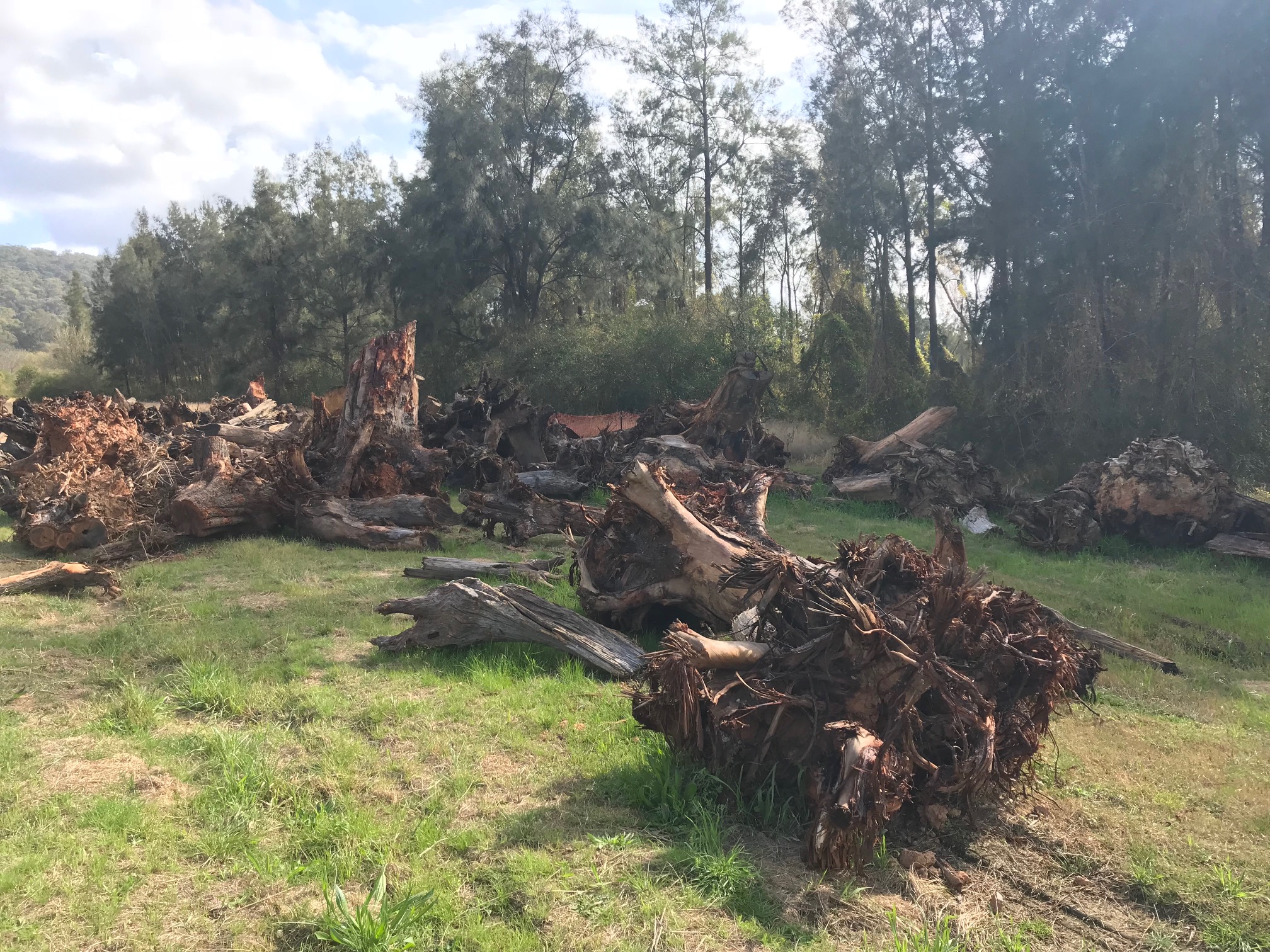Fish Habitat Resnagging Project
- Details
- Written by: Teela Griffin Penrith City Council (02) 4732 7777 (02) 4732 7958 council@penrithcity.nsw.gov.au https://www.penrithcity.nsw.gov.au 601 High St Penrith NSW 2750 Australia
Penrith Council and the Department of Primary Industries (DPI) is restoring fish habitat at Emu Green Reserve and Fowler Reserve.
Stage one of this project commenced in 2020 and was completed in 2021.
Stage two commenced in 2024 and will continue into 2025.
The project is in its second stage and focuses on restoring native fish habitat to the Nepean River. Works include introducing woody debris, such as root balls and logs, back into our river systems that were removed due to historical river clearing, to help create natural habitat.
Logs and root balls have been placed along the banks of the Nepean River to encourage the native fish species populations to thrive. The works involved the use of machinery and were undertaken by highly trained experts in this field.
You can learn more about the project from this informative video by Soil Conservation Service.
The project won the Division C in the Natural Environment Protection and Enhancement: On-Ground Works Award at the Local Government NSW Excellence in the Environment Awards and the Habitat and Wildlife Conversation category at the Keep Australia Beautiful Awards in 2022.


How can I get involved?
You can volunteer with us to help restore the fish habitat along the Nepean River. Activities include tree planting, weed removal, learning more about the fish species local to Penrith, and assisting with the general rehabilitation of the riverbank.
Join the Bass Sydney Fishing Club Bushcare Group at Emu Green Reserve in Emu Plains.
Check out our What’s On events page for details.
What is resnagging?
Resnagging is putting snags (woody coarse debris) like root balls and logs back into our river systems that we removed due to agricultural purposes or protection of development. These snags are repurposed to create natural habitat.
Logs and root balls have been removed due to development, road upgrades and the aerotropolis and are repurposed as material to be used for conservation projects with biodiversity outcomes, such as the fish habitat restoration project. Repurposing these logs and root balls diverts them from being chipped or sent to landfill where they can’t be reused.
You can learn more about the project from this informative video by Soil Conservation Service.

Why is it important to restore our native fish habitat?
Coarse woody debris such as logs, root balls and branches are important structural components of rivers such as the Hawkesbury Nepean River. The debris provides essential habitat for our aquatic and terrestrial organisms.
The re-introduction of complex habitat using root balls and logs with hollows or branches will improve the aquatic ecology, provide native fish refuge and other resources, and lead to an increase in numbers of native recreational fishing species such as the Australian Bass.
The benefits to the native fish species includes:
- Potentially increasing species’ diversity by improving habitat complexity that will increase food, shelter and other resources.
- Increasing potential breeding habitat for native fish species.
- Increasing the potential for safe breeding/ spawning environments for native fish species and the microbes and invertebrates they depend on for food.
- Providing protection from predators and high velocity rain events.
- Benefiting the huge number of recreational fishers who use the Nepean River.
What species of native fish will benefit from this project?
- Australian Bass (Macquaria novemaculeata)
- Australian Smelt (Retropinna semoni)
- Bully Mullet (Mugil cephalus)
- Eel Tailed Catfish (Tandanus tandanus)
- Freshwater Mullet (Trachystoma petardi)
- Freshwater Herring (Potamalosa richmondia)
- Silver Perch (Bidyanus bidyanus)
- the threatened Macquarie Perch (Macquaria australasica)
Watch the Nepean River, Our River: Resnagging Fish Habitat video to learn more about resnagging and hear about the benefits from our Bass Sydney Fishing Club Bushcare volunteers.

